Toughkenamon, PA — Many parallels can be drawn between motion pictures and aviation. The Wright Brothers’ historic flight in 1903 occurred the same year Edwin Porter’s film, “The Great Train Robbery”, premiered. The early 1900’s was a time of fragile flying machines and silent pictures. Over the next century both aviation and motion pictures would evolve side by side. The parallels are such that the latest blockbuster film cost as much as an Airbus 380.

In 1927, the first Academy Award for Best Picture was awarded to “Wings”, a film about military aviators during World War I. That same year the first motion picture with sound was released. This film, “The Jazz Singer”, ushered in a new era for Motion Pictures. Two years later, the Ford Motor Company would do the same for aviation.

The Ford Tri-Motor, or “Tin Goose” as it is affectionately known, first flew in August of 1929. Only 199 were ever produced. It was the first commercial aircraft that was designed with passenger comfort in mind. It featured an enclosed cabin and 3 engines for “safe measure”. This aircraft was the pioneer of air travel. The Tri-Motor is a movie star in its own right. This aircraft type would be featured in movies like a serial episode of Flash Gordon in 1936, Indiana Jones and the Temple of Doom in 1984 and more recently Public Enemies with Johnny Depp in 2009. So like all movie stars… where are they now?
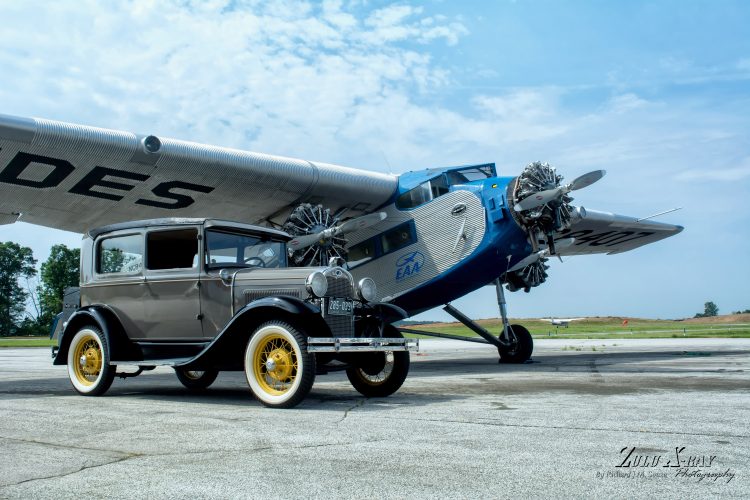
The Experimental Aircraft Association (EAA) operates one of two flying Ford 4-AT-E Tri-Motors. This particular aircraft was manufactured in 1929 and was the 146th off the Ford assembly line. It has been on tour with the EAA since 1985. This aircraft offers aviation enthusiasts the opportunity to step a back to a simpler, yet more glamorous era.
This past week, the “Tin Goose” made a stop at the local EAA chapter 240 at New Garden Airport in Toughkenamon, Pennsylvania. Air Museum Network was on hand to get a glimpse of a founding member of the Golden Age of Aviation. The quaint and picturesque New Garden airfield was the perfect location to receive such a prestigious guest.
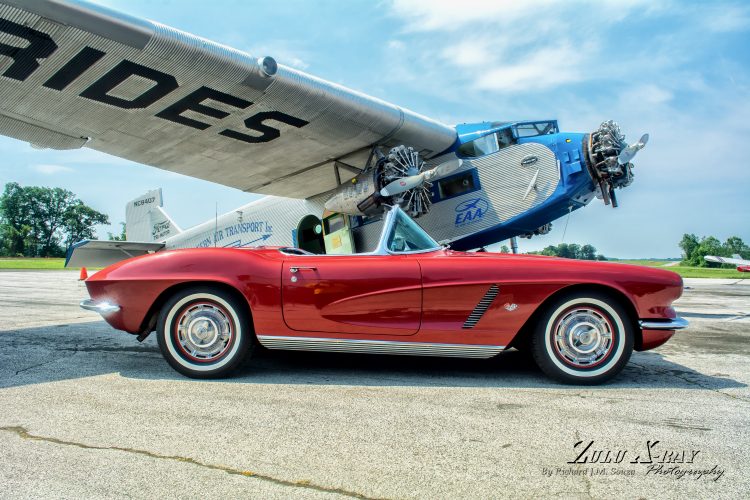
EAA Chapter 240 is no stranger to aviation events. The annual Festival of Flight Airshow is evidence of their ability to organize and coordinate a production of this nature. Despite all the planning and organizing, Saturday’s flights ran into a problem. During a flight the previous day, the Tri-Motor developed a cracked piston. The crew ensured that replacement parts were shipped overnight. Unfortunately, they did not arrive until late Saturday. This unexpected curveball wasn’t capable of throwing Chapter 240 off kilter. Resorting to plan B, the decision was made to wheel the Tri-Motor out and allow visitors to step inside the aircraft and photograph her with a variety of classic Ford vehicles… and one lone Chevy. But it wasn’t just a Chevy, it was a classic Chevrolet Corvette. Even Henry Ford would have given special dispensation.
With a strong will and a can-do spirit, the crew worked diligently to make sure the repairs were made by the time the cow jumped over the moon. With the green light on and thumbs up, flights were to resume the following day. The anticipation was mounting and early Sunday morning, Air Museum Network and 7 other passengers had a ticket to ride. Before boarding, the passengers sat through the mandatory safety briefing. Seatbelts, egress and life vests, everything was covered. Maybe not with the finesse and grace of an airline flight attendant but probably more effective. Passengers then followed the safety line to the aircraft door. A volunteer who took the tickets, tore off the stub and wished everyone a pleasant flight.

This particular aircraft was acquired by the EAA in 1973 after it had been damaged in a storm. It would spent the next 12 years in restoration. The interior of the aircraft looks as it probably did back in the day. The detail on the wood trim just transports you back to late 20’s.

The sound of the three engines is deafening. But this isn’t noise, it is music. The 3 radial engines all firing in sequence and create the proverbial one note song. As the engines rev, the “Tin Goose” rolls down the 3695 ft runway. The flight wasn’t without a bump here or there but then again, this is isn’t just flying, this is Golden Age flying. This is the way it was. The 15 minute ride took the passengers to an altitude of 1000 ft. at a speed of 80 mph. It was just enough to get a feel for flying in a vintage aircraft. It may not be everybody’s cup of tea, but judging by the turnout it was on a lot of bucket lists. By the end of the day over 18 sorties were flown. That is over 140 happy smiling faces.
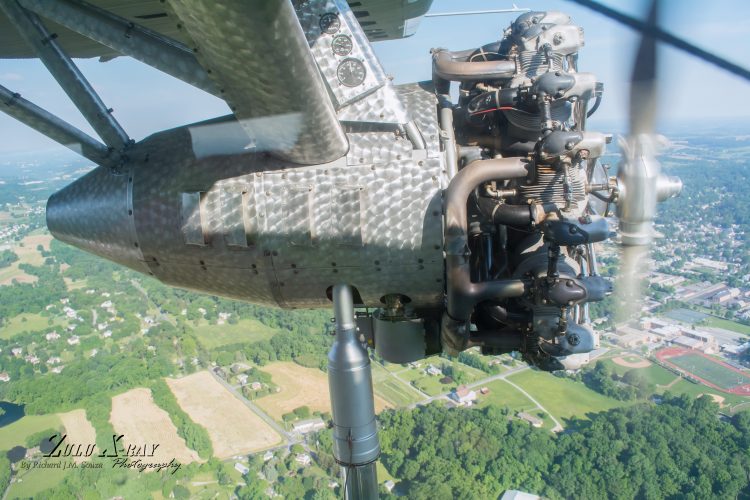
On this weekend, Air Museum Network had the opportunity to attend two major airshows. The kind with Loops, barrel rolls, explosions, fast Jets and the flashy P-51D. So why turn that down over an old tin bird? The answer is because there is always the next airshow. Another reason is because part of the EAA mission statement reads “It’s about passion, camaraderie, that ol’ can-do spirit”. These are all values the Air Museum Network holds dear. These are also words Chapter 240 lives by. From the parking attendants to safety personnel and food servers, they all have the same purpose and passion. Even the two young chaps who delivered water to a thirsty reporter did it with a smile and a kind word. When one combines this with a chance to fly in an 87 year old aircraft the answer becomes obvious.

Like the traveling film projectionist of yesteryear, the “Tin Goose” hits the road in search of another town and another crowd. And true to a Hollywood ending, she takes off into the evening sky and the credits roll and fade to black.
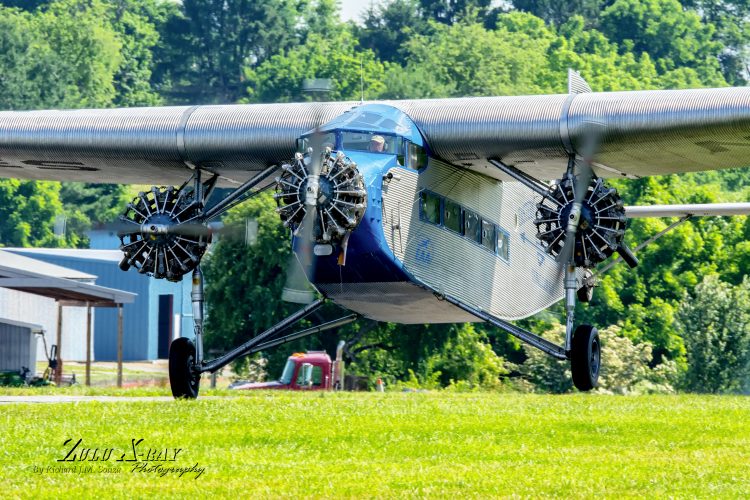
Air Museum Network wished to thank the Experimental Aircraft Association, the Crew of the Ford 4-AT-E Tri-Motor Rand and Bob Siegfried, the entire staff at EAA Chapter 240 and a special Thanks to Mike Parry for making it happen.
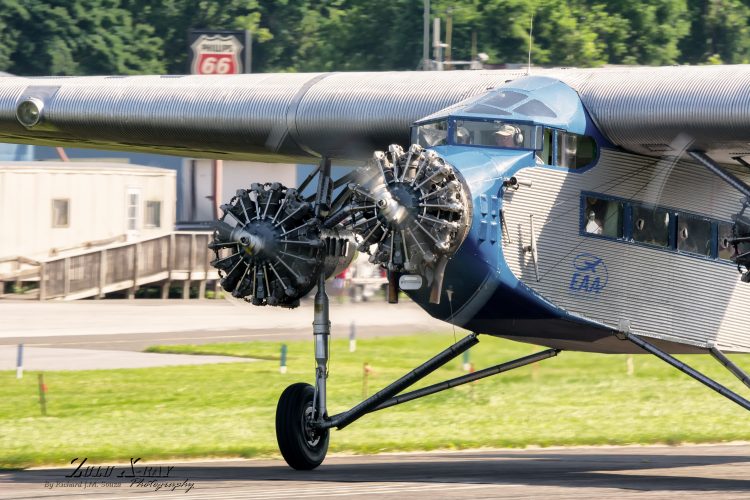
For more information on The Experimental Aircraft Association or the next stop of the tour, visit www.eaa.org
For more information on EAA Chapter 240 located at the New Garden Flying Field Airport, visit www.eaa240.org
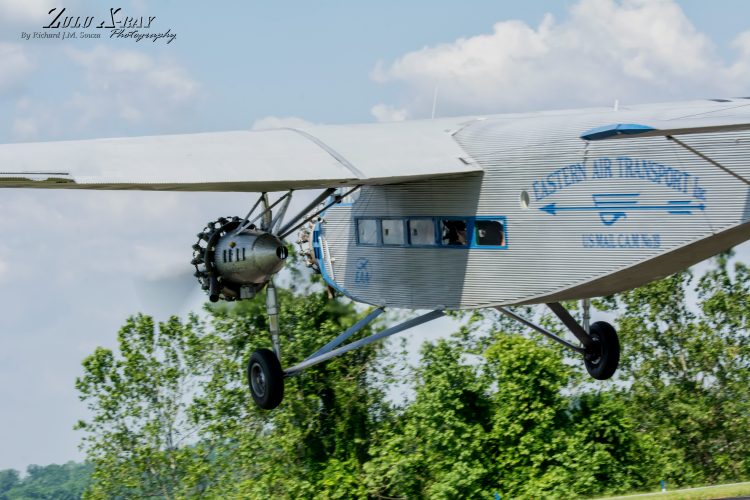



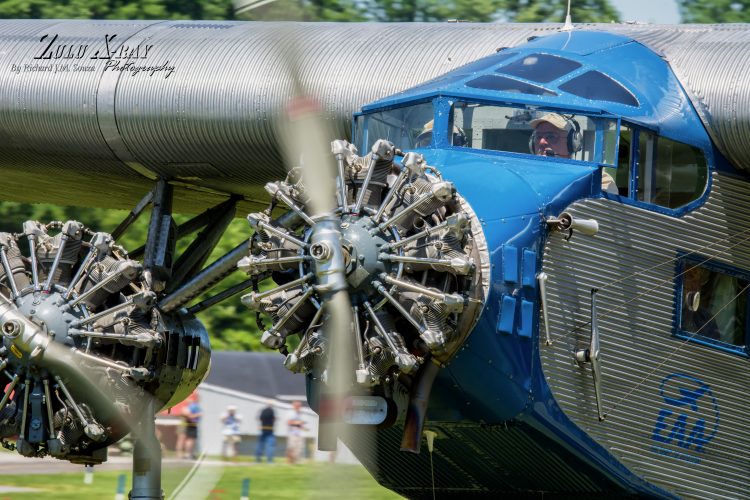
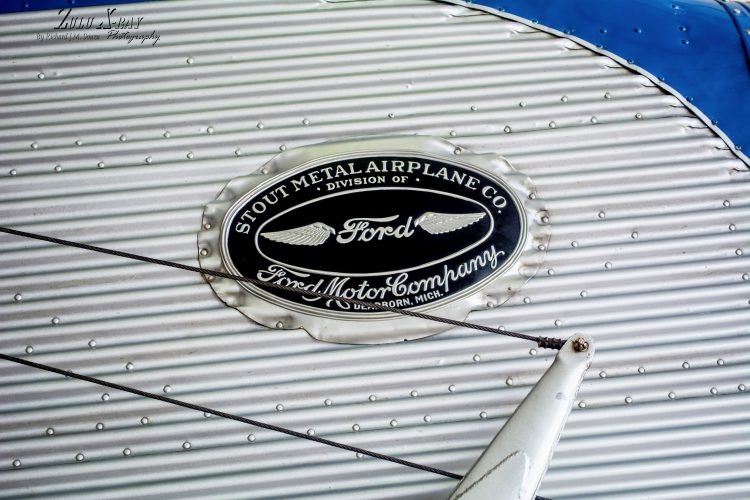

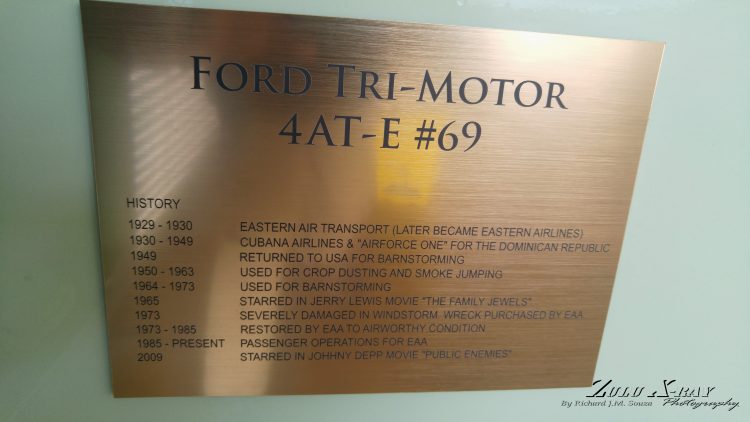
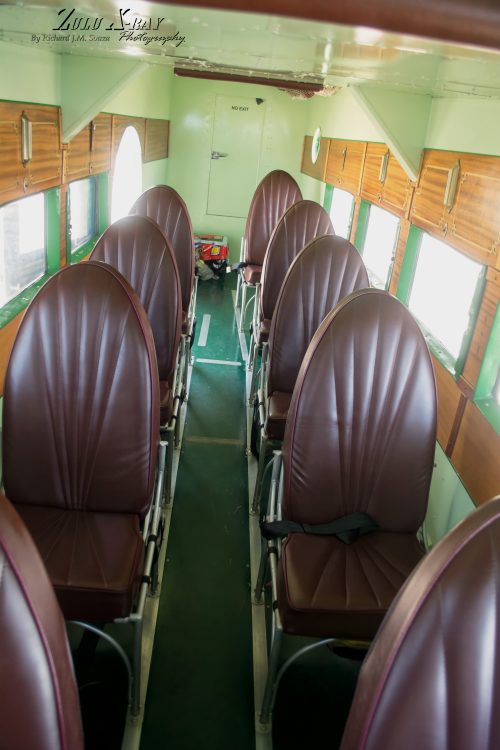



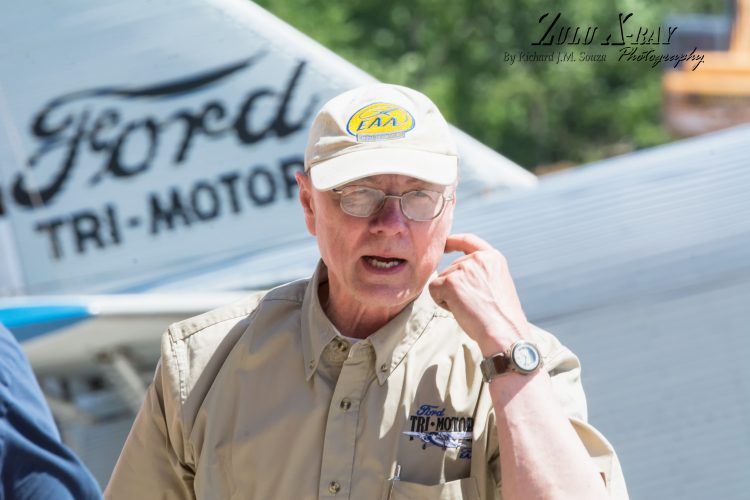
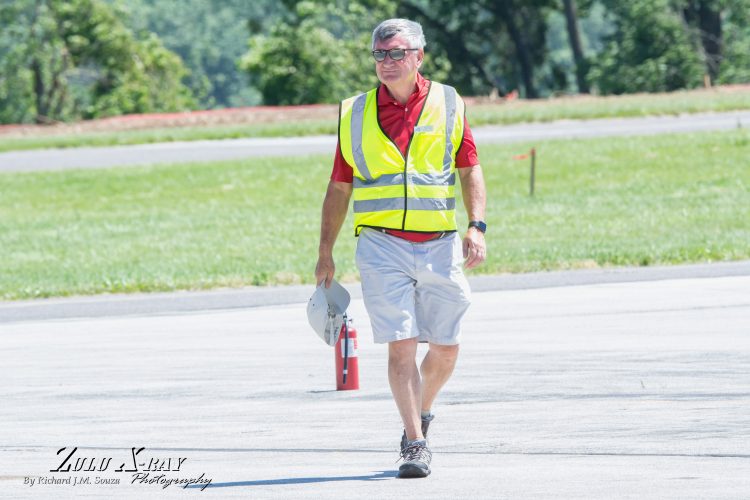
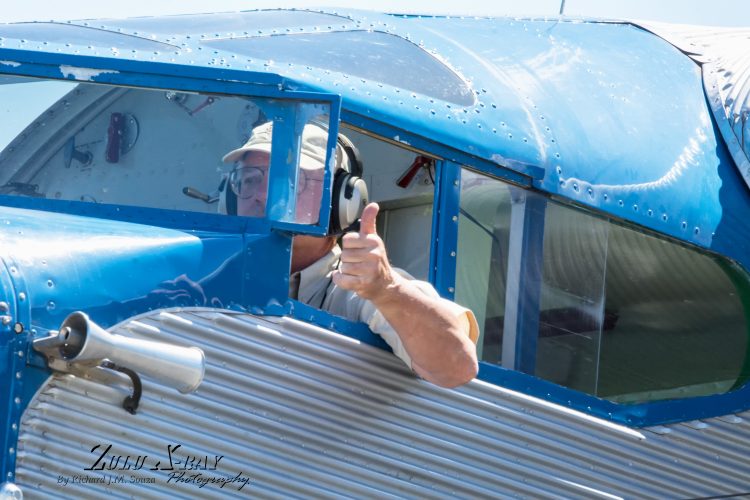

Our thanks to the Air Museum Network and to Richard for covering our event and producing such memorable and high quality images. Much appreciated, and Richard was great to work with.
Hope to see you again soon, back at our Chapter and our unique airport.
Mike Parry
Communications, EAA Chapter 240
http://www.eaa240.org